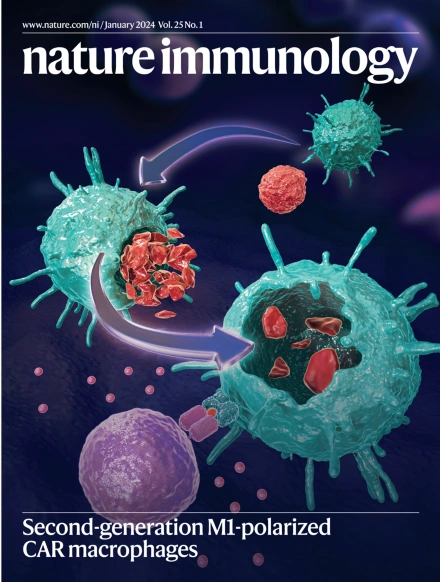Spatial and functional diversity of innate lymphoid cells in the human female genital tract may contribute to antiviral responses to HIV.
IF 27.6
1区 医学
Q1 IMMUNOLOGY
引用次数: 0
Abstract
Innate lymphoid cells (ILCs) are tissue-resident lymphocytes specialized in cytokine secretion that lack antigen-specific receptors. The contribution of ILCs to antiviral mucosal immunity in humans, particularly in the female genital tract (FGT), remains unexplored. Here we resolved human FGT ILC diversity by spectral flow cytometry and CITE-seq, spatial location within genital anatomical regions using ChipCytometry, and determined homeostatic function and antiviral responses. We uncovered spatial and functional specializations of genital ILC subsets under homeostasis, with compartmentalized age-related and pregnancy-related changes. CD161 expression differentially discriminated ILC subsets preloaded with cytokines at steady state. We identified a unique NKp44+CCR6+ ILC3 subset in the endometrium that actively degranulated at homeostasis and was located in lymphoid aggregates surrounded by B cells and T cells. By contrast, ILC1s were found scattered, enriched in the ectocervix and located close to the epithelium. Following in vitro HIV stimulation, genital ILCs displayed rapid subset-specific antiviral responses. These findings reveal distinct tissue and subset-specific features of FGT ILCs and their capacity to immediately respond to viral stimuli, providing a foundation for future studies to determine the potential role of ILCs in mucosal immune protection in the FGT.人类女性生殖道先天淋巴样细胞的空间和功能多样性可能有助于对HIV的抗病毒反应。
先天淋巴样细胞(ILCs)是组织驻留淋巴细胞,专门分泌缺乏抗原特异性受体的细胞因子。ILCs对人类,特别是女性生殖道(FGT)的抗病毒粘膜免疫的贡献仍未被探索。在这里,我们通过光谱流式细胞术和CITE-seq分析了人类FGT ILC的多样性,使用芯片细胞术分析了生殖器解剖区域的空间位置,并确定了稳态功能和抗病毒反应。我们发现了生殖ILC亚群在内稳态下的空间和功能特化,与年龄相关和妊娠相关的变化是分区的。CD161的表达差异区分ILC亚群预载细胞因子在稳定状态。我们在子宫内膜中发现了一个独特的NKp44+CCR6+ ILC3亚群,该亚群在稳态状态下主动脱粒,位于B细胞和T细胞包围的淋巴样聚集体中。相比之下,ilc1分布分散,富集于子宫颈外,位于上皮附近。体外HIV刺激后,生殖器ILCs表现出快速的亚群特异性抗病毒反应。这些发现揭示了FGT ILCs独特的组织和亚群特异性特征及其对病毒刺激的即时反应能力,为未来研究确定ILCs在FGT粘膜免疫保护中的潜在作用提供了基础。
本文章由计算机程序翻译,如有差异,请以英文原文为准。
求助全文
约1分钟内获得全文
求助全文
来源期刊

Nature Immunology
医学-免疫学
CiteScore
40.00
自引率
2.30%
发文量
248
审稿时长
4-8 weeks
期刊介绍:
Nature Immunology is a monthly journal that publishes the highest quality research in all areas of immunology. The editorial decisions are made by a team of full-time professional editors. The journal prioritizes work that provides translational and/or fundamental insight into the workings of the immune system. It covers a wide range of topics including innate immunity and inflammation, development, immune receptors, signaling and apoptosis, antigen presentation, gene regulation and recombination, cellular and systemic immunity, vaccines, immune tolerance, autoimmunity, tumor immunology, and microbial immunopathology. In addition to publishing significant original research, Nature Immunology also includes comments, News and Views, research highlights, matters arising from readers, and reviews of the literature. The journal serves as a major conduit of top-quality information for the immunology community.
 求助内容:
求助内容: 应助结果提醒方式:
应助结果提醒方式:


